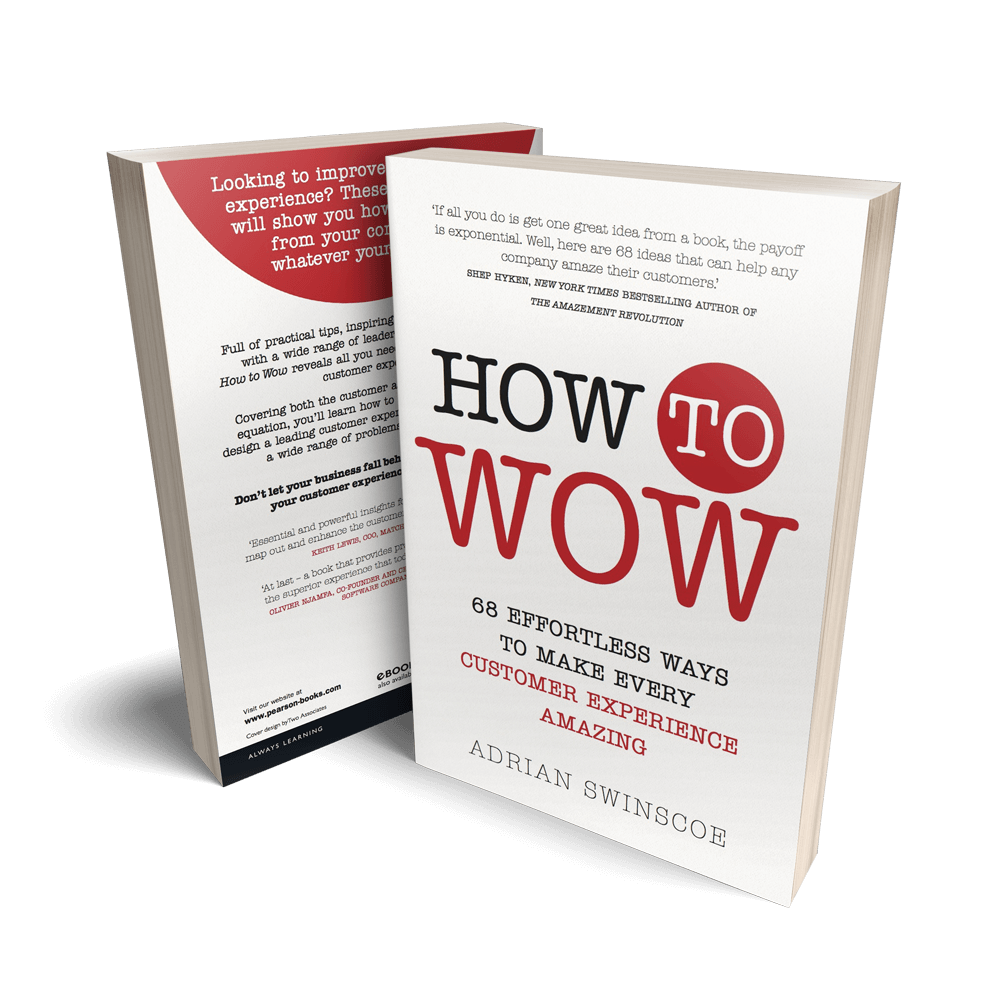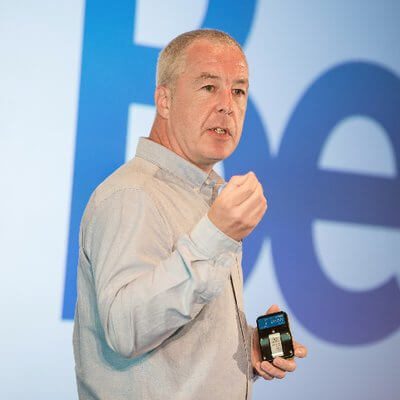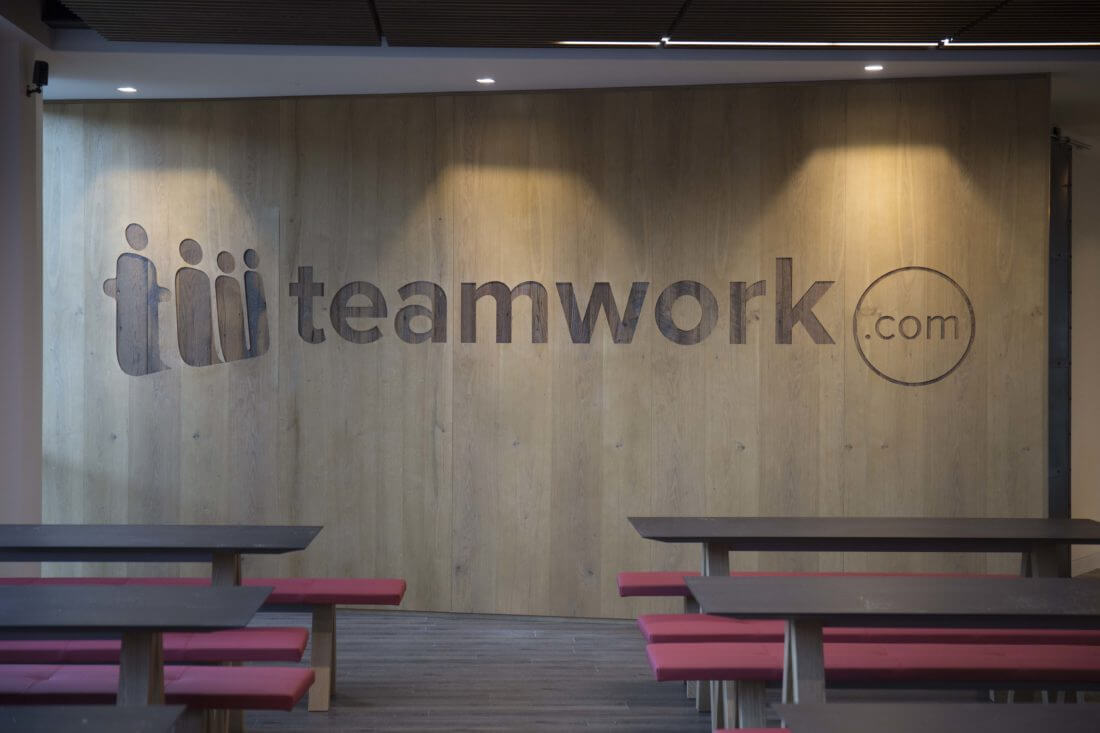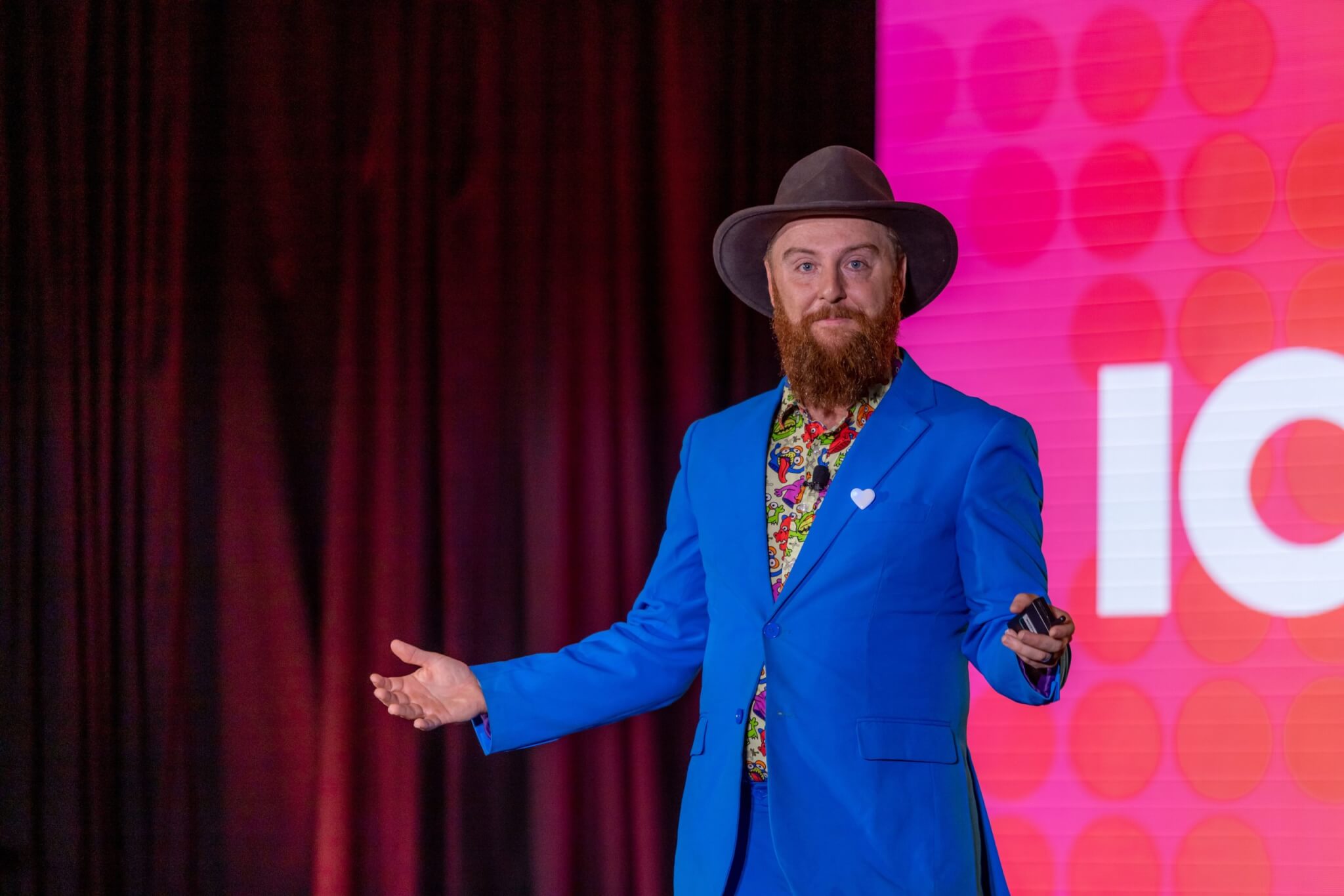This time, we have a very special guest as a part of our series of interviews with top CX professionals. This is Adrian Swinscoe, who, apart from being a former teacher, economist, manager of businesses, speaker, best-selling author, Forbes contributor, and a recognized voice in customer experience, is also a Punk music lover and an avid rock climber.
The bio of Adrian Swinscoe’s webpage says that he is a huge fan of organizations that do great things for their customers and that he’s been helping many to achieve their own level of greatness for over twenty-five years now via consulting, writing, speaking, workshops and advisory work. So, if you also want to raise your organization to a new level of its greatness, keep reading this article!

Career path
Q: Adrian, can you tell us a little bit about your career path? How did you come up to what you do now?
Well, I worked as a professional economist and a teacher in a business school for about five years. Moreover, I nearly bought a steel company, but that’s a long story.
Then, at some point in my life, I started to work independently and came up with an idea for my own blog: I decided to write about something I didn’t like, which was bad service. I understood that developing customer value is a challenging task, so I focused on researching, writing, and investigating the question of delivering great service for 12 years.
In 2010 I published a book, and in 2011 I launched a podcast. Shortly after that, I got spotted by Forbes and started writing for them.
These days, I continue to do some writing and speaking. Also, I do advisory work and a bunch of workshops to help companies build capacity or facilitate decision making. I feel pretty lucky, as I get paid to do the stuff I like with people I like, so it doesn’t feel like work!
Memorable cases
Q: Great! When it comes to your advisory work, I know that you have cooperated with such companies as Apple, Diesel, Shell, and many others. Can you tell me about one of the most memorable cases you have experienced so far?
Well, I can’t discuss the specifics of particular things. However, there is something interesting about all those cases: sometimes the answers to the questions people have are obvious. You just have to see them. Also, you have to be willing to look in the right place and to make time to go and find the answers.
Help others instead of thinking too much of yourself
Moreover, you need to realize that it’s not all about you when it comes to the idea around customer experience. You can be great at work. However, you need to realize that it’s not just about you but rather about how you fit into the system, the organization, and the team.
For example, I remember talking to a big brand name one time. They had an agile team, a lean team, and a digital team. Also, they had a customer experience team trying to reinvent the business and define the future. Yet, nothing had changed.
The reason for this is because, despite having all the needed resources to make new developments, they hadn’t gone and met people that were at the heart of the business and took care of 95% of all their profits. But how do they know what developments will make the life of their customers better or easier if they do not talk to people at the core of their business? What they’ve done is focusing too much on themselves, but not on the heart of what they were doing. So, you can develop all the needed skills and have all the needed technology, but you will get nothing done until you learn how to develop organizational social capital.
The following words of an American author of a book called See You at the Top Zig Ziglar perfectly summarize my point: “If you help enough people get what they want, you will get what you want.” So, instead of thinking too much of yourself, your career, your promotion, and your bonus, you’d better raise other people up and help them. Only by doing this, you can achieve the needed result.
It’s not all about you when it comes to the idea around customer experience. Instead of thinking too much of yourself, your career, your promotion, and your bonus, you’d better raise other people up and help them.
Look for solutions with a beginner’s mind
So, it feels completely strange to me that some people would prefer not to go and talk to a support team of their customers. Why wouldn’t they go and talk to them on a regular basis? Only by doing their absolute best to listen to them and making their lives easier, they will be able to make the experience of their customers better. Actually, the solutions are all there. You just have to be willing to go and look for them.
One more important thing: don’t go with a fixed idea of what the solution could be. Don’t have the approach of “We have to find an agile solution or we have to have a digital solution or a VOC solution. Do you have that?” No, forget that.
But rather go with a kind of state which Buddhism describes as being a beginner’s mind. The only way that you can learn something new is when you assume nothing and you go with an open mind, open heart, open eyes, and open ears. This way, you will really see what’s going on from other people’s perspectives. You might not agree with all of it. That’s fine. But go and listen and go and look and go and see and go and feel what’s going on.
The only way that you can learn something new is when you assume nothing and you go with an open mind, open heart, open eyes, and open ears.
Success qualities
Q: What three qualities have helped you to become successful in what you do now?
Curiosity. I’m always looking for different ideas and different ways to approach things. That comes from psychology, or philosophy, or sociology, or history, or whatever it might be and how it can be applied to different things.
Openness. I’m not trying to be right. Therefore, I’m always up for learning stuff.
Stamina. I’ve realized that it takes a lot of time and effort to build up a reputation. And there’s no guarantee that it’s going to work in the end.
Books
How to Wow: 68 Effortless Ways to Make Every Customer Experience Amazing
Q: Let’s talk about your career as a writer and discuss two books of yours - How to Wow: 68 Effortless Ways to Make Every Customer Experience Amazing and Punk CX. Starting with How to Wow, what are the main ways to boost customer experience that can be found in the book?
So, as the book’s title suggests, there are 68 ways you can do to improve the customer experience. However, I wouldn’t call these ways effortless. On the contrary, they can be hard work, so the word “effortless” in the title was used by the publisher for marketing reasons.
All 68 ways to improve customer experience that are described in the book are organized around a customer lifecycle. Also, there are some internal dynamics around how we communicate with customers and motivate teams to deliver a high level of service experience. There’s a lot of different ideas.
I think that the biggest lesson out of all this is that customer service and experience are not what you think they are. They are not about shiny lights, specialness, surprises, and everything else. The secret of how to wow is in delivering a qualitative service and a quality experience on a consistent basis every time because consistency and reliability are the things customers value more than anything else. So, if you do that, you’re out in front of the market whatever anybody tells you. If you're a hundred percent reliable and consistent, it gives your customers a surprising delight, because not so many people are that reliable and that consistent.
The thing is that people forget and don’t do that because here’s the thing: that’s hard work. It takes time, discipline, and commitment. It’s not particularly sexy, but it’s hard work.

Punk CX
Q: Great! Let’s move on to another book of yours, Punk CX. It has a very interesting title. Moreover, your X bio suggests that you are an “aspirant Punk CXer.” Can you elaborate on the book a bit?
Well, it’s published in a special way. It’s all colorful, which means that it’s not a regular business book. It has that sort of punk sensibility.
The book came out of the following idea. I had a conversation with a friend of mine back in December 2017. We were having a mutual complaint to each other about why customer experience involves a lot of activity but does not offer a lot of significant improvement. So, I mentioned that I wish somebody would do something a bit more punk when it comes to customer experience and that idea sat with me for a little while. Then it popped back into my head in the summer of 2018, and I thought about it a bit more.
And, actually, I’m a fan of punk music. So, I thought about where punk came from. The original punk exploded at the back of a self-indulgent and rather complicated progressive rock in the 1970s. Rock music was full of big guitar solos and people playing lots of different keyboards at the same time, and punk music appeared to turn it around. Also, while the rock was quite exclusive and it felt like you obviously had to have a Ph.D. in music to participate, punk musicians wanted to do something which was a bit more democratic and less self-indulgent. That struck me.
I understood that the customer experience around that time was exhibiting some of the same characteristics that progressive rock did in the 1970s. So, it was in this danger of losing sight of the customers themselves while becoming more interested in itself. This was the reason why we weren’t seeing a lot of the improvements: everyone’s talking about the customer experience as a thing. And I thought: “I don’t care about customer experiences as things. What I care about is the experience the customer actually gets.”
In the 1970s, the customer experience was in danger of losing sight of the customers themselves while becoming more interested in itself. This was the reason why we weren’t seeing a lot of the improvements.
So, if the customer experience looked a lot like what progressive rock did, then what would its punk version be? That’s the main idea Punk CX deals with.
Some more interesting things: the book doesn't have chapters, but is styled like an album. So, most of its pages include titles, short sets of what you call lyrics, and some graphics, which makes the book very punky. Also, Punk CX doesn’t offer answers, but rather serves as a slap in the face for the customer experience industry. Its main idea is that your job is to produce better outcomes for your customers. And, if you’re not doing that, then stop doing what you’re doing. That’s it.

Customer experience in 2021: what to expect
Q: Straightforward, easy, and so true. And let’s talk about the articles that can be found on your blog. I’m particularly interested in the one that deals with eleven customer experience-related predictions you’ve commented on. What should a company pay attention to when it comes to customer experience in 2021?
Well, it depends on the company, right? It depends on who the company is, where they are, what they do, how they do it, what their current situation is, and all of those different sorts of things. So, is there one universal thing different companies should be focusing on? No, not necessarily. You know, it’s all relative.
The only thing that we know for certain is that the virus pandemic is going to continue. So many people will continue to either work remotely or have to isolate themselves. So, things will continue to be different.
Apart from this, I think that there is no common kind of prediction. The only thing that everyone needs to do is to focus on your customers and listen to what they’re saying. Only by doing this will you make the experience of your customers better.
For example, let’s say you’re calling your bank, or insurance company, or whatever. And sometimes you have to wait for like half an hour, or an hour, or two on the phone, right? So when was the last time that you were able to press a certain number to receive a callback? I don’t think that it is as common as it might be.
What’s fascinating is that sometimes we overlook some of the simple things. We ignore some of the simple solutions because they just look too simple! But the point is to focus on simple things. That’s the common thing for every company in 2021.
Sometimes we overlook some of the simple things and ignore some of the simple solutions because they just look too simple. But the point is to focus on simple things.
COVID-19 pandemic vs. normal workflow
Q: And, since you’ve mentioned that the virus pandemic is going to continue, I want to ask you the following question: is the COVID-19 pandemic a threat or rather an opportunity for your work?
It’s both. I was pretty busy last year, which was good. And this year looks pretty solid as well. But I know a lot of people who have suffered, and my heart goes out to them.
And everyone has to understand that there will be another crisis. Whether that’s another public health one, or it’s a social disruption or economic, or financial sort of distress. Or the climate, and it will kill us all if we don’t get it right. So, the only guarantee that we have is that there will be another crisis. We know when it will be, but it will happen at some point.

Climbing as three-dimensional problem-solving
Q: Thank you. Let’s move to the personality-related section of questions. Your website suggests that you are an avid rock climber. What do you like most about this hobby?
It’s about adventure! I’m actually not a great rock climber, as I do not choose really hard routes to climb. But I’ve climbed in a number of different places. I like going there with my friends. And it’s a great way to travel!
Moreover, it’s a great way to see the world from a very different perspective, both macroscopic and microscopic. There is definitely a physical side to it. But there is also a mental side, as climbing can become a meditative activity. So, climbing can be compared to three-dimensional problem-solving.
Finally, climbing is not only about managing fear and exposure but also about staying focused. And, actually, if you can, do stay focused. That becomes quite easy for you to get into the heart of things. So, it’s a beautiful state to be in.
Superpower and personal hero
Q: If you could choose one superpower to have, what would it be, and why?
I’d give people the gift of sight. And when I say sight, it’s not just kind about the pure sight, but the sight that would allow people to see things from other people’s perspectives.
Q: My final question to you: who is your personal hero?
Well, I don’t have one.
However, I have a lot of people that I admire. The list consists of writers, campaigners, and thinkers, such as Tom Peters, John Timpson, Seth Godin, Karen Jaw-Madson, Donella Meadows, Jim Collins, Nelson Mandela, Mahatma Gandhi, Martin Luther King. Oh, and Greta Turnberg, for making adults look stupid, lazy, and uncaring.
So, I admire all different sorts of people that are willing to stand up and speak the truth. And also people who keep talking even if nobody is listening, because it’s about doing stuff that you believe in.
By the way, your true culture reveals when nobody is listening or watching. So, the question is what do you do when nobody’s listening or watching? If you do nothing, then all you’re doing is for attention. Therefore, that’s the point: find the thing that you care about and then care about it, just keep going.
Your true culture reveals when nobody is listening or watching.
As I have already mentioned, one of the biggest kinds of things for me is about stamina. So, if you pick something and do not get overnight success, it doesn’t mean that you are wrong to care about it. Maybe it just means that you haven’t stuck at it for long enough.
So, if you want to do something that matters, then pick something that you care about and then make it matter.
Q: Great takeaway message! Thank you!


